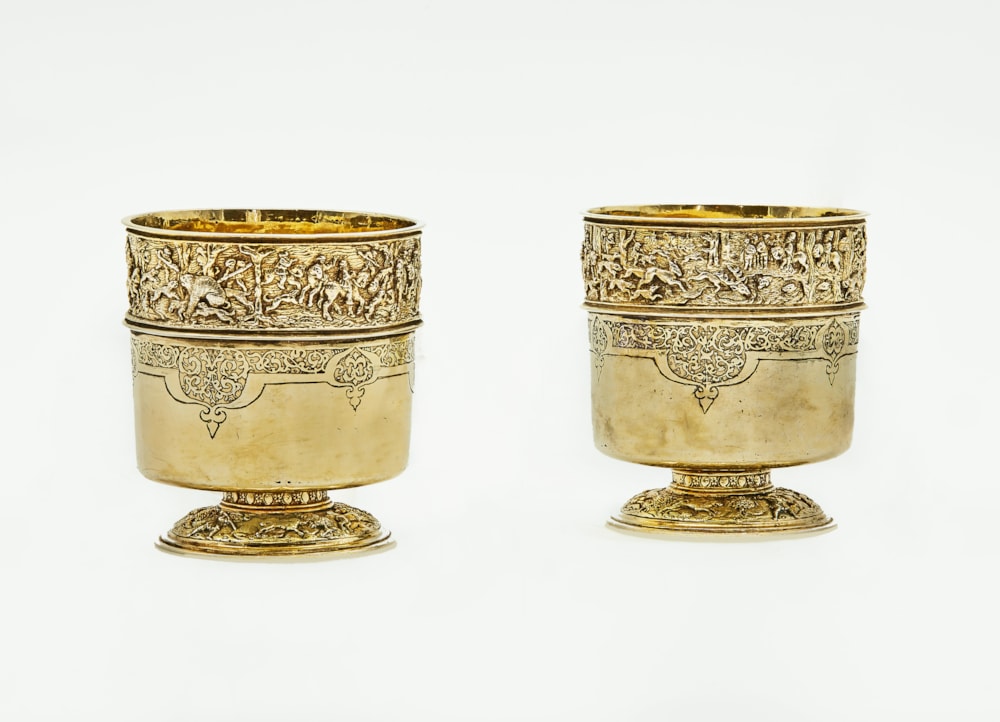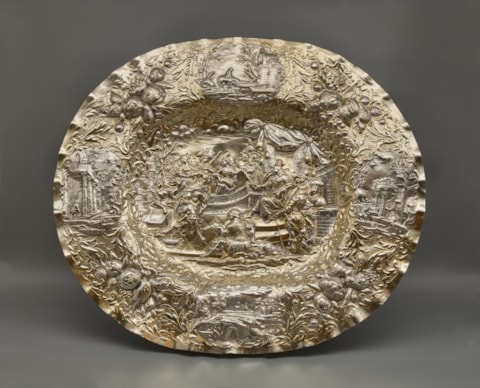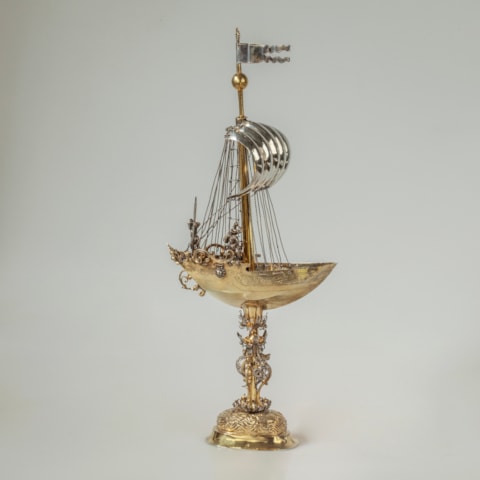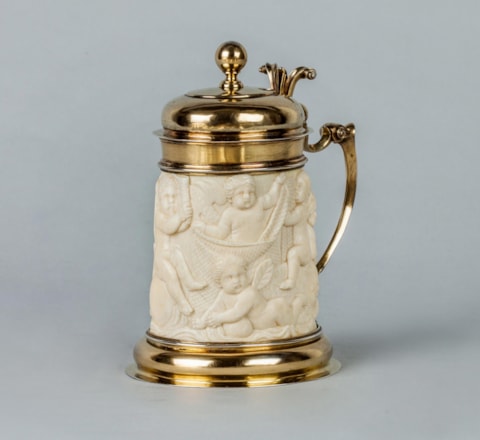
Pair of German Renaissance silver-gilt Stacking Beakers
ca. 1566-1570
Hallmark N for Nuremberg
Master's mark SB for Sebald Buel
h: 9 cm, 403 g
Towards the end of the 16th century, the so-called beaker or stacking beaker were very popular and became a specialty of the Nuremberg goldsmiths.
The hunting scenes depicted are inspired by a series of popular prints published by Harmen Jansz Müller after designs by Johannes Stradamus, a Flemish artist who was active in Florence and worked for the Medici. The hunting scenes are similar to the designs for the tapestries with which Cosimo Medici decorated his villa in Poggio a Caiano and which were inspired by the hunting practices at the Florentine court. Johannes Stradamus produced twenty-eight drawings, which were later published as prints throughout Europe and had a lasting influence on the European goldsmith's trade.
Prov.: Collection Baron Leopold de Rothschild, London
The hunting scenes depicted are inspired by a series of popular prints published by Harmen Jansz Müller after designs by Johannes Stradamus, a Flemish artist who was active in Florence and worked for the Medici. The hunting scenes are similar to the designs for the tapestries with which Cosimo Medici decorated his villa in Poggio a Caiano and which were inspired by the hunting practices at the Florentine court. Johannes Stradamus produced twenty-eight drawings, which were later published as prints throughout Europe and had a lasting influence on the European goldsmith's trade.
Prov.: Collection Baron Leopold de Rothschild, London




